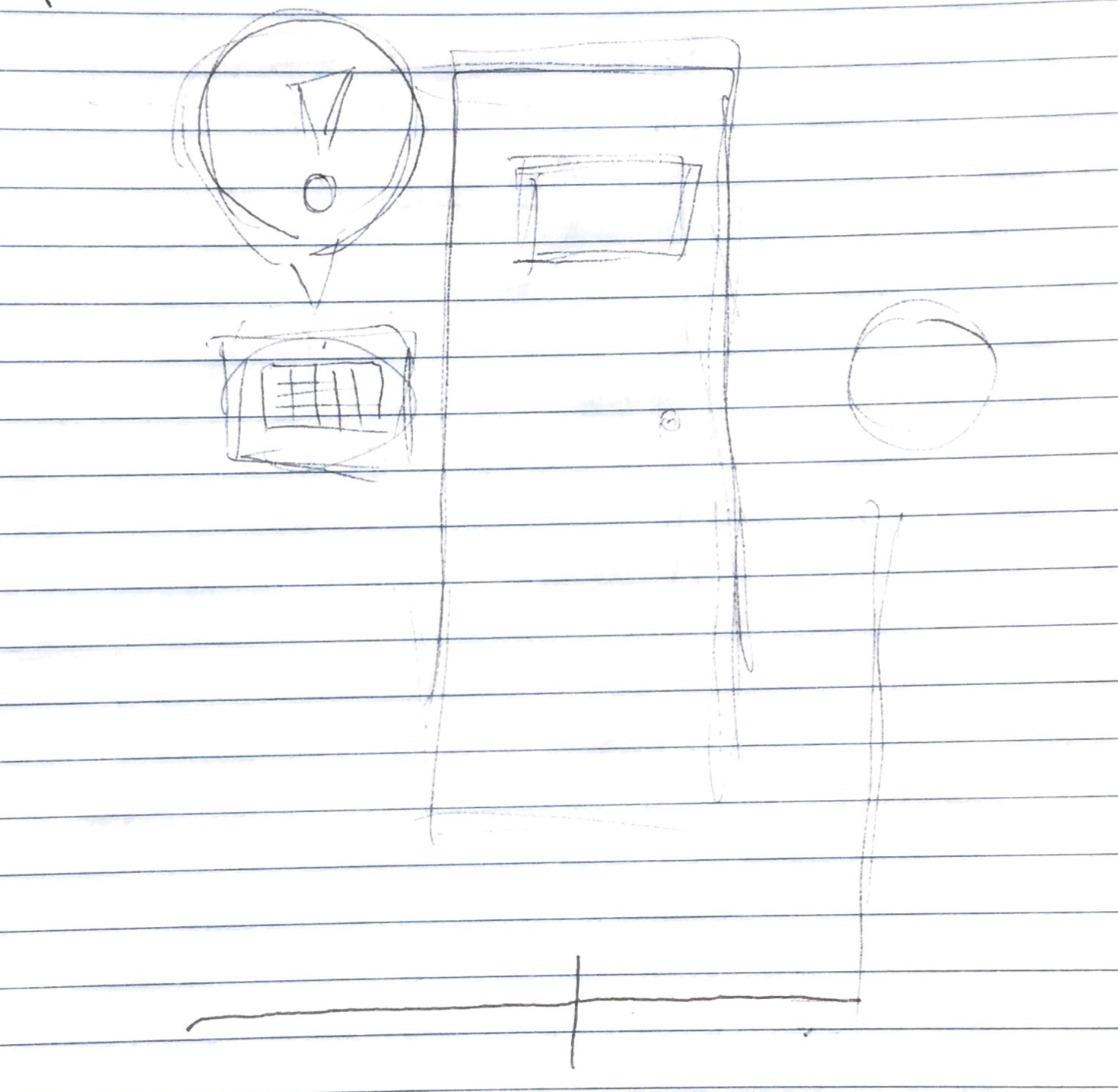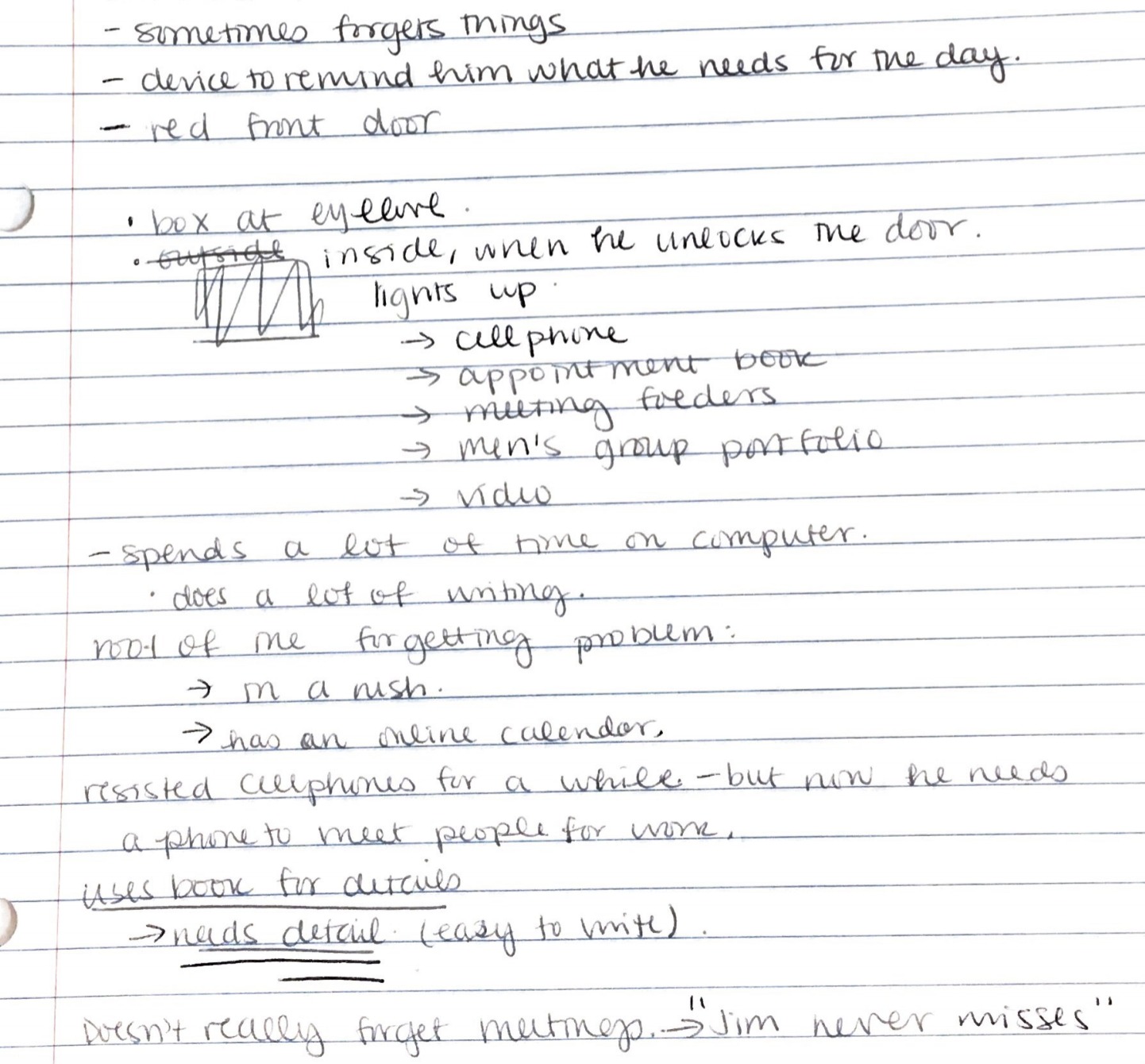For this project, our assignment was to meet with an older friend, learn about them, and make them some sort of device that they could use daily to make their life just a little bit better. We met with Jim at ABP (a place he frequents because of all his OSHER meetings) to talk to him in more detail. This meeting proved to help us greatly in finding an idea that would work for him. We were quite enthusiastic to begin the process that would lead to our masterpiece.
With the sole goal of getting to know Jim better (as well as ideate some possible contraptions that he would appreciate) we set our agenda to have two main steps: the first was to learn about Jim, and the second was to talk about some things he would appreciate. We wanted the discussion to be organic and genuine, one where Jim could tell us about all the things that he appreciated, didn’t appreciate as much, and wished he could improve. With this in mind, we came up with a few guiding questions, asking the rest as the conversation flowed. Those, along with the meeting agenda, are as follows:

The meeting itself yielded some very interesting observations. The first, main observation is that Jim is extremely involved in his community, lending his time and knowledge to anyone who asks. This, however, leads to an extremely busy schedule, whereby Jim often forgets important materials he needs. To remedy this, he asked us to build him a device that can remind him to take what he needs before he leaves.

A rough sketch Jim drew of what he was looking for.
With such a clear idea of what Jim wanted, we jumped right into ideation. Jim showed us pictures of his house and front door (ask the authors if you want to see this for planning purposes), where he wanted the device, and explained to us the way he wanted the device set up. To trigger the screen to turn on and remind Jim of what he needed, we decided to add a motion sensor to the device. As soon as it detects motion by the door, Jim would be reminded to take everything he needs for that day. Since his office is right next to the front door and he walks in and out of there a lot, he decided that he would rather not have the device light up when he goes near there, but would much rather have it light up when he is walking through his foyer. In addition, to avoid having to unnecessarily use the screen when he is getting the mail or taking out the trash, we decided that the screen would have a “cancel” capability. Since Jim’s daily supplies change often, we also decided on setting up a user interface on his computer so that he can set his reminders from there and see them on his screen when he is ready to leave.
Coming out of the meeting, we were glad to have a clear-cut idea, but we realized implementation would be slightly more complicated than expected. Since we need to set up a user interface and have motion sensors possibly in another part of the home, we decided to set up a server that can take care of managing all triggers and inputs. Additionally, our initial idea was to implement a break-beam sensor in one part of the house that would be the only trigger to the door dashboard, but additional thought and some limitations (normal break-beam sensors have a range of only a few inches) led us to choose a motion sensor instead. An additional benefit of that is that the motion sensor can work over a much better range, as well as not have to be installed wirelessly. The server would still be needed for the user interface, though. We decided to host this server on a Raspberry Pi connected to an Arduino ESP82, which would take care of all triggers and inputs. These two working in conjunction, we decided would be optimal for Jim based on the feedback he sent us.
Important snippets from meeting notes (that eventually guided our final idea) are as follows:


Leave a Reply
You must be logged in to post a comment.